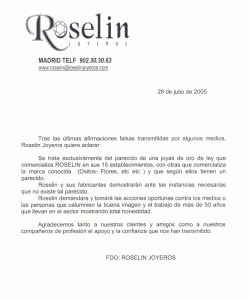Definition of Ecological Restoration
Ecological Restoration Ecosystem Services / / April 02, 2023

Lic. in biology
Ecological restoration groups all actions aimed at returning degraded or damaged ecosystems to a functional and sustainable state, with the aim of recovering biodiversity and ecosystem services that these they provide.
We live in a time of constant changes in natural environments. Many of these changes are negative and the product of human activities and lead to the degradation of natural environments, the loss of biodiversity and increased pollution. Despite existing conservation efforts, it is sometimes necessary to try to repair damage already done. The conservation is responsible for preventing environmental damage to the extent possible while environmental remediation is called restoration.
Sometimes, it is not possible to return an ecosystem to its original state, as it was before the degradation, but it is possible to return that ecosystem to a state of "good health". Ecological restoration attempts to restore the structure and function of ecosystems by reducing or, if possible, eliminating causes of degradation, the reintroduction of native species, the recovery of genetic diversity and the improvement of soil and water quality. water.
The restoration ecology It is the branch of ecology that is in charge of analyzing the causes of the degradation of ecosystems and the better ways to restore the damage done, as well as to measure the results of a recovery initiative. restoration.
Ecological restoration is important because the degradation of ecosystems is a global problem and has serious consequences for biodiversity and the quality of human life, so that working on it is essential to maintain the health and diversity of natural systems and ensure the long-term sustainability of the ecosystem services they provide. they provide.
Scope and limitations
Ecological restoration can be applied to literally any degraded ecosystem on Earth, from wetlands and coral reefs to forests and grasslands. It can also be carried out at different scales, from the restoration of a small patch of land to the recovery of a large landscape.
This, in practice, is limited by many factors. Although in theory it can be applied to any ecosystem, in order to restore an ecosystem one must have a deep ecological knowledge about that ecosystem and about the causes of its degradation, and there are ecosystems that are still little known, such as oceanic ecosystems in which neither Even the magnitude of the degradation caused by climate change, the loss of biodiversity and the pollution. Without this basic information, it is not possible to think of a restoration strategy for these ecosystems.
Restoring a small space is cheaper and requires less work than doing it in a larger space; thus, large-scale restoration initiatives are very expensive and are usually funded by large companies or governments.
On many occasions, the causes of ecosystem degradation are many and the financial and human resources for restoration are limited, so it is necessary to Prioritize which are the most “damaging” causes of degradation for that ecosystem, or which is the main problem in order to focus on one or a few actions to restore the ecosystem. time.
Restoration Strategies
Restoration strategies are closely linked to what is the cause or causes of ecosystem degradation and which of these causes it is decided to restore. The causes of ecosystem degradation are local, that is, in each place, there may be different factors of degradation acting, so the knowledge of the local ecology is key to determine the actions of restoration.
The loss of biodiversity is, however, one of the major causes of environmental degradation, global in scope and affecting all ecosystems to a greater or lesser extent. Biodiversity loss refers to the loss of species in ecosystems.
Causes of biodiversity loss
There are several reasons that contribute to the loss of biodiversity, among them we can mention:
Biological invasions and introduction of invasive species: The introduction of alien species into a natural ecosystem can cause the disappearance of native species and the alteration of processes ecological.
Overexploitation of natural resources: excessive fishing and hunting, clearing of forests, and exploitation of minerals and other natural resources can lead to the loss of species.
Climate change: the alteration of the climatic patterns (temperatures, seasonality of the rains) can affect the cycles of the species, or directly change the environmental conditions in which that species can survive.
Pollution: Air, water and soil pollution is a major threat to biodiversity, as it can harm the health of species and ecosystems.
Biodiversity restoration actions
In this scenario, restore actions might involve the control of invasive species (In nature reserves, a common action is the felling or hunting of introduced plant or animal species to reduce their expansion).
Planting or reintroduction of native species: in cases in which the loss of biodiversity has made certain species disappear completely from the ecosystem, they can be implement actions for the reintroduction of species, which implies planting the disappeared plant species or the release of species of animals.
Remediation of contaminated soil and water: This is a common problem, especially near cities. Remediation means to “remove” contaminants from water or soil. To do this, there are chemical engineering solutions but also plants, fungi and bacteria. have great potential for use in remediation of contamination, which in this case is called bioremediation. Of course, for any remediation attempt to be successful, the sources of contamination must first be removed.
These are just some of the main drivers of biodiversity loss, and it is important to note that these factors can interact and aggravate each other, and even that in each environment, there may be local factors that are affecting. To protect biodiversity it is necessary to address these factors and promote an integrated approach to conservation that takes into account the multiple challenges facing biodiversity.



